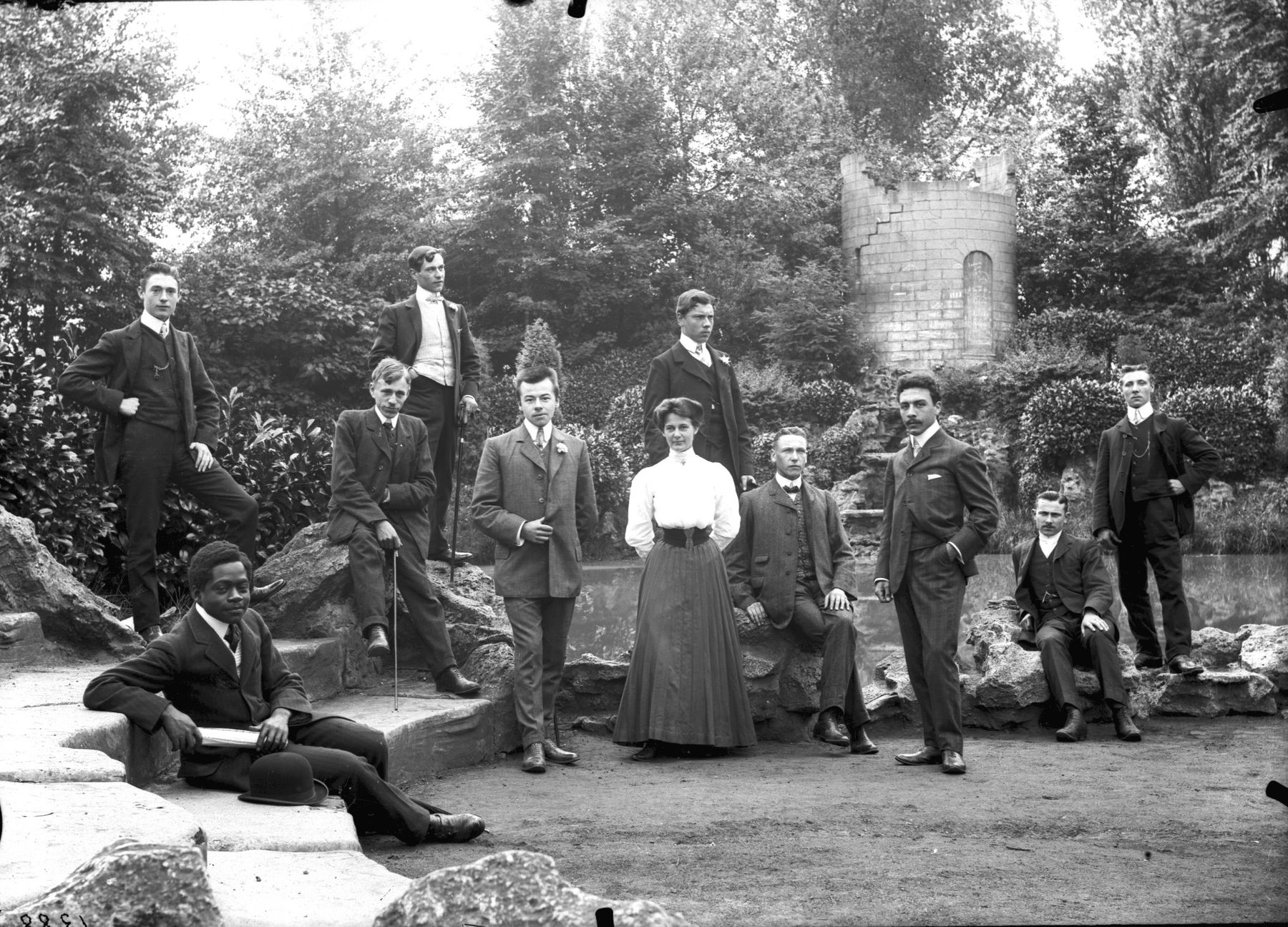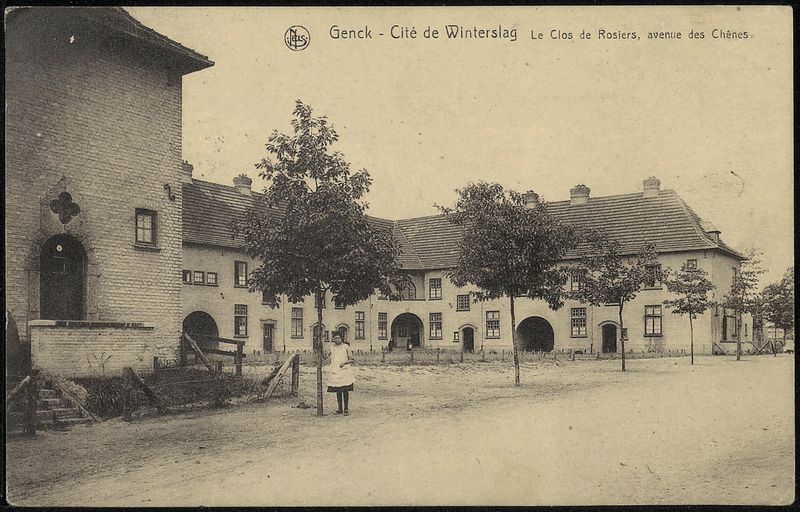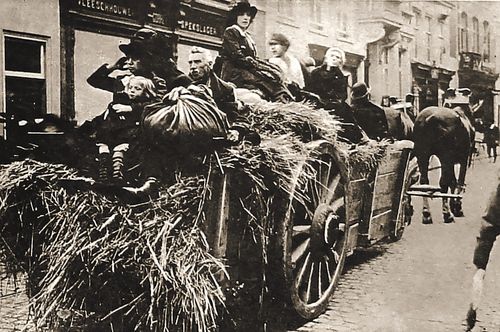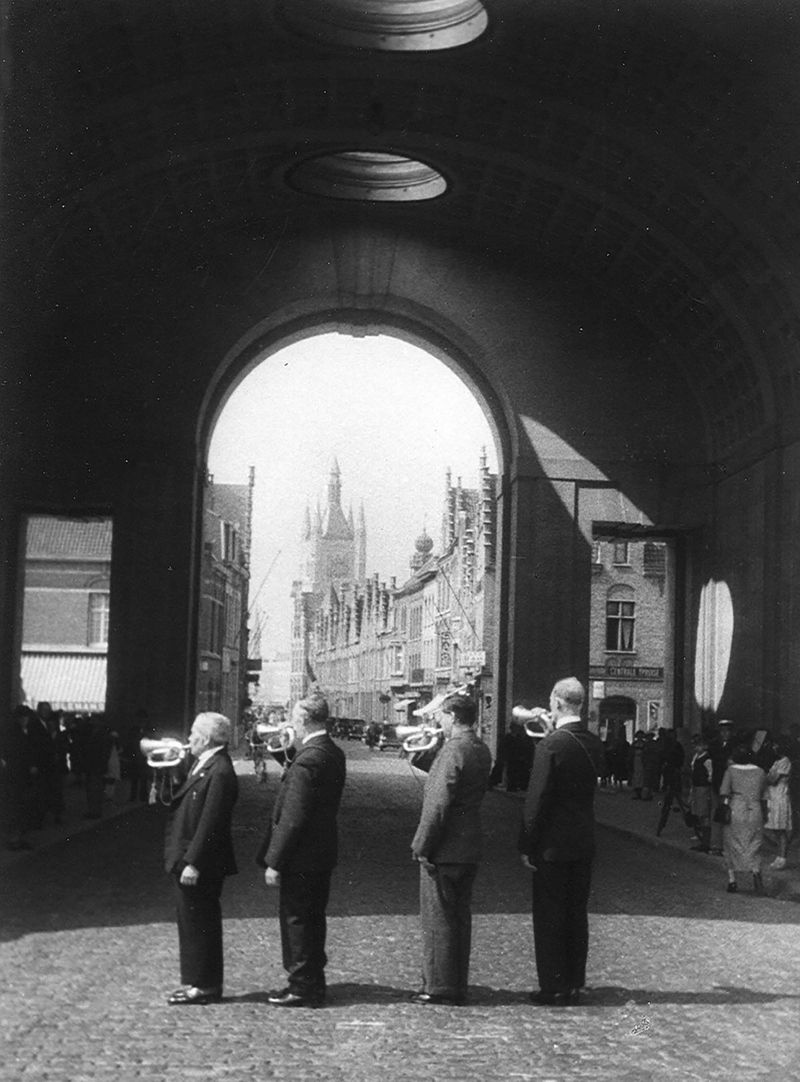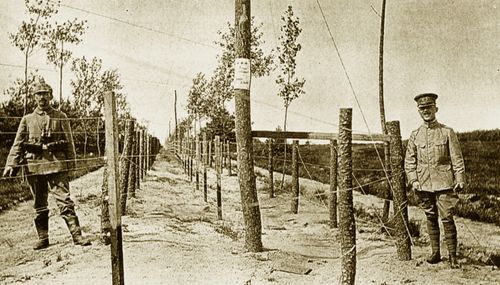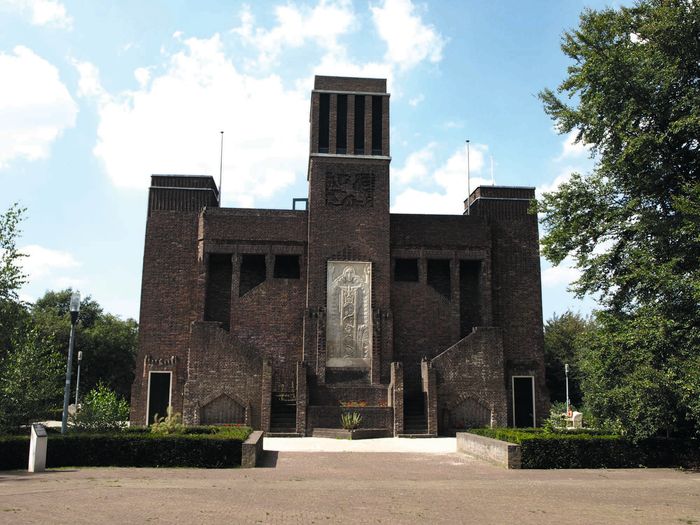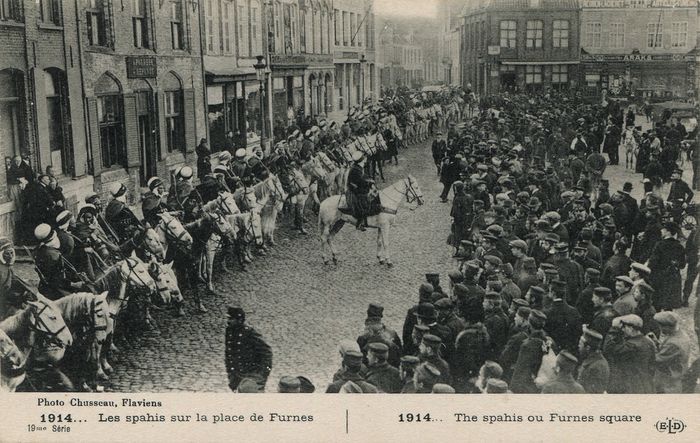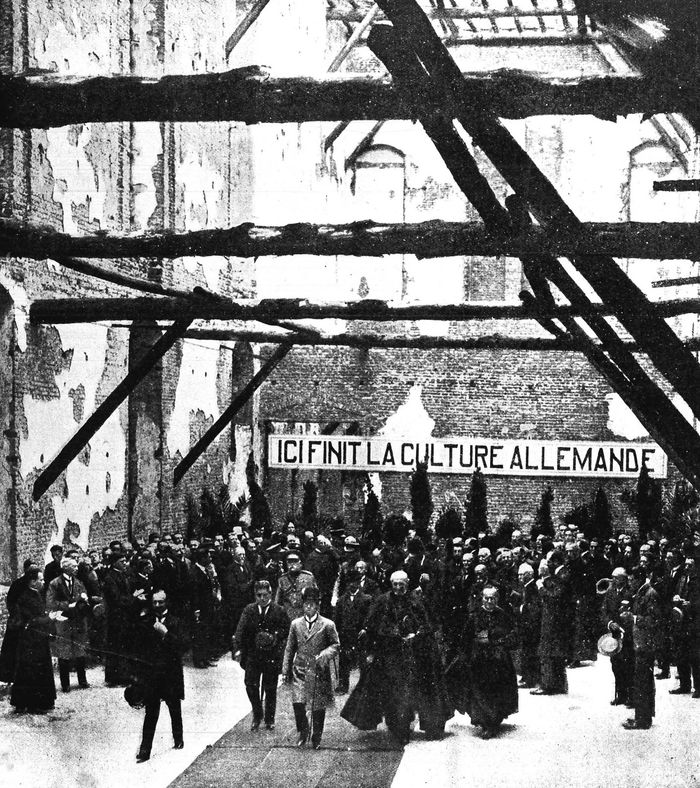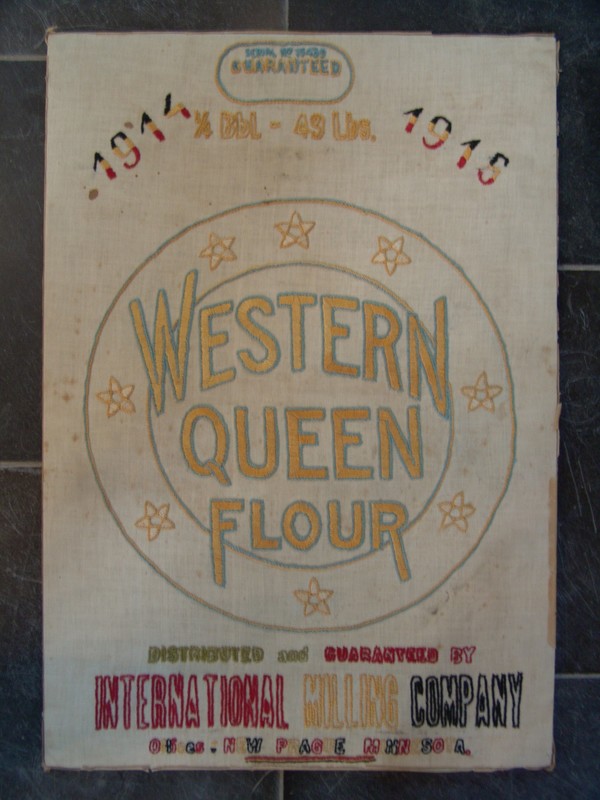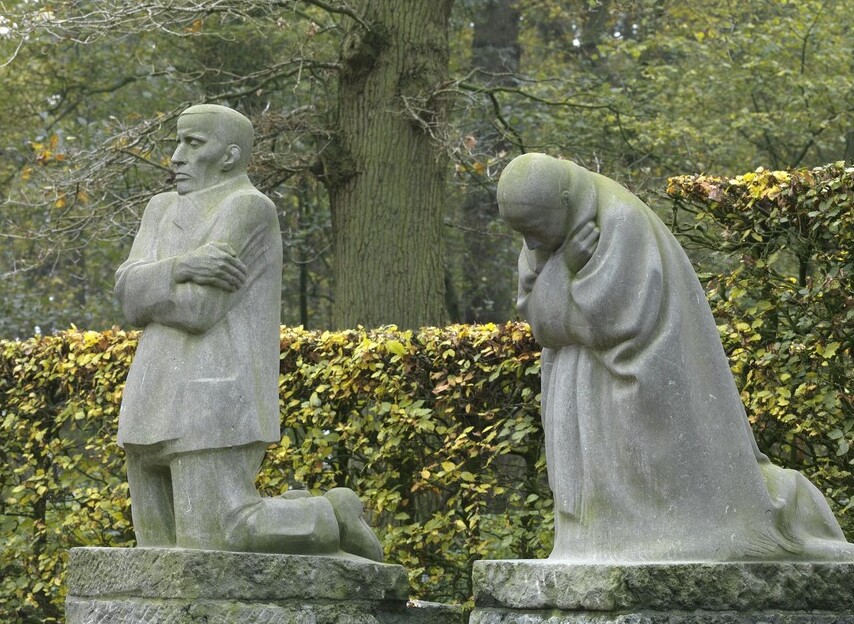
Since 1956 Grieving Parents by Käthe Kollwitz has stood in the German war cemetery in Vladslo, a sub-district of Diksmuide | www.artinflanders.be, photo Hugo Maertens
Grieving Parents by Käthe Kollwitz
The First World War
Grieving Parents by Käthe Kollwitz in the German war cemetery in Vladslo near Diksmuide gives striking expression to the universal grief of the First World War. The German artist lost her youngest son Peter at the beginning of the conflict. She expressed her grief with two figures: a grieving mother and father.
Käthe Kollwitz designed the work as a grave monument for her 18-year-old son Peter who was killed during the battle of the Yser. She completed the pair of statues between 1927 and 1932. It was a tribute to all young victims of war.
Never before had so much blood flowed on Belgian soil as during the First World War. Of the millions of dead worldwide approximately 600,000 died in the Westhoek in Flanders. They came from all corners of the world and all left grieving loved ones behind.
In 2023 UNESCO recognised the Germany cemetery in Vladslo as a world heritage site, together with 138 cemeteries and locations in Flanders, Wallonia and France associated with the First World War.
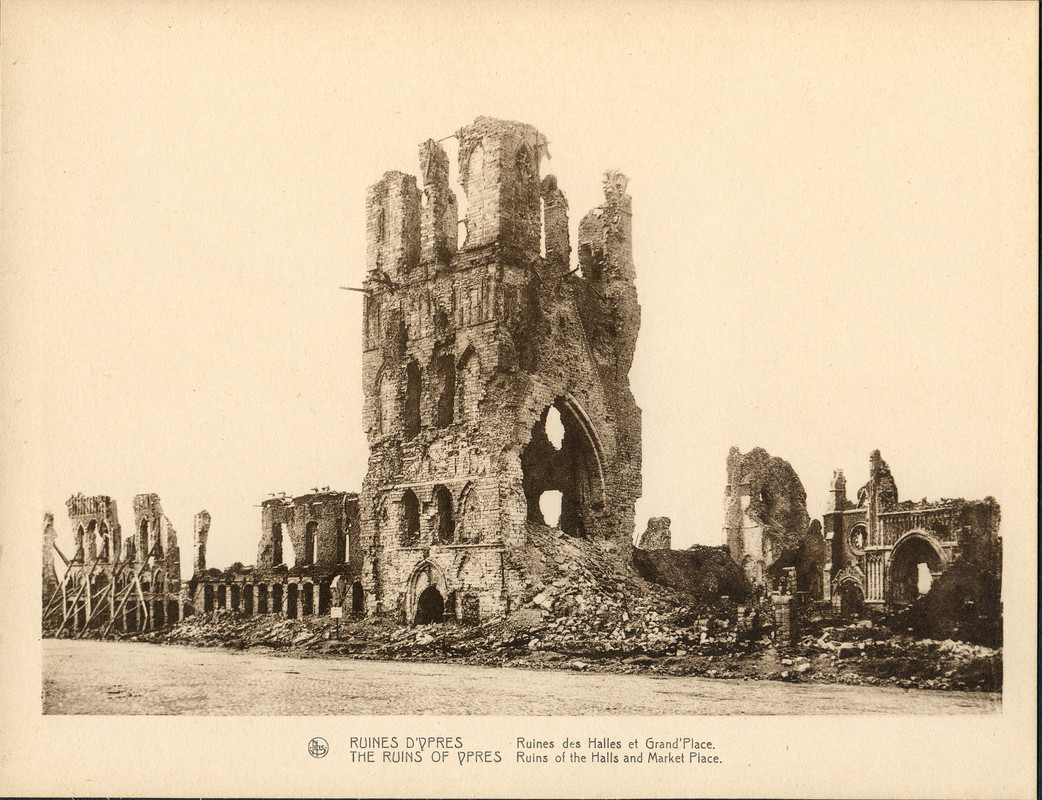
Westhoek verbeeldt, private collection
The Cloth Hall in Ypres before and after its destruction during the First World War.
The First World War
When the First World War began on 28 July 1914, Belgium was a neutral country. It did not belong to one of the two great power blocs confronting each other: the Central Powers (the German Empire and Austria-Hungary) and the Entente (France, Great Britain and Russia). That neutrality did not stop the German army from invading Belgium on 4 August 1914. The Belgian army fought back, with the support of the French and British empires.
The German advance ground to a halt at the end of October 1914 on the Yser. An extensive trench front line stretched from the coast in Nieuwpoort through Northern France as far as Switzerland. Only a small corner of Belgium, in West-Flanders beyond the Yser, remained free. The Belgian army, with King Albert I as its commander had its headquarters in Veurne. The government departed for France.
The greater part of the country was occupied by the German army. The occupation was hard. Countless decrees restricted the life of the population. The most hated measure was compulsory labour from 1916 onwards: over 180,000 Belgians had to work for the German war effort.
Military innovations such as poison gas, tanks and planes ensured an unprecedented slaughter. Only when the United States of America actively engaged in the war in Western Europe, was there any movement in the front line. The German army was forced back. On 11 November 1918 the warring parties signed an armistice. Belgium mourned over 40,000 military and 23,000 civilian deaths, a great deal of its industrial infrastructure had been destroyed and numerous towns and villages had been laid waste.
Focal points
Discover more on this topic
Non-fiction
Vluchten voor de oorlog: Belgische vluchtelingen, 1914-1918
Davidsfonds, 2004.
14-18. Oorlog in België
Davidsfonds, 2014.
Congo aan den Yser, de 32 Congolese soldaten van het Belgisch leger in de Eerste Wereldoorlog
Manteau, 2013.
De laatste getuige. Het landschap van Wereldoorlog I in Vlaanderen
Lannoo, 2006.
De Groote Oorlog. Het koninkrijk België tijdens de Eerste Wereldoorlog
Atlas Contact, 1997.
Wereldoorlog I. Vijf continenten in Vlaanderen
Lannoo, 2008.
De vergeten soldaten van de Eerste Wereldoorlog
EPO, 2019.
Land van schroot en knoken. Slachtoffers van ontploffingen in de frontstreek 1918-heden
Davidsfonds, 2011.
Tegen-strijd. De beleving van de Eerste Wereldoorlog in het land van Dendermonde
Davidsfonds, 2014.
Oorlogsdagboeken 1914-1918: een vrouw vertelt over haar Eerste Wereldoorlog
De Bezige Bij, 2013.
De stilte van de Salient, de herinnering aan de Eerste Wereldoorlog rond Ieper
Lannoo, 2003.
Belgen maken bommen. Zesduizend militairen en vluchtelingen in de munitiefabriek van Birtley, Engeland (1916-1919)
Lannoo, 2016.
Brood willen we hebben! Honger, sociale politiek en protest tijdens de Eerste Wereldoorlog in België
Manteau, 2013.
Oorlogsdagen. Overleven in bezet Vlaanderen tijdens de Eerste Wereldoorlog
Manteau, 2013.
Vriend over vijand. De Grote Oorlog in spotprenten
Lannoo, 2013.
Voor den kop geschoten. Executies van Belgische spionnen door de Duitse bezetter (1914-1918)
Roularta, 2009.
De grote oorlog: een kijkboek over de Eerste Wereldoorlog
Lannoo, 2014. (6-9 jaar)
Odon: oorlogsdagboek van een IJzerfrontsoldaat
Lannoo, 2019.
1914, de Duitsers komen: de moordende begindagen van de Eerste Wereldoorlog
Lannoo, 2010.
De allerlaatste getuigen van WOI
Lannoo, 2011.
Augustus 1914. België op de vlucht
Manteau, 2013.
Käthe Kollwitz. De stem van een generatie treurende ouders
De Klaproos, 2014.
Peter Kollwitz: Diksmuide, 22 oktober 1914
De Klaproos, 2013.
Fiction
Elsie en Mairi – Engelen van Flanders Fields
Lannoo, 2013. (strip)
Cher Ami. Ode aan de dieren in de Eerste Wereldoorlog
Lannoo, 2016.
Tunnelkoorts
Lannoo, 2008. (12+)
Post voor mevrouw Bromley
Atlas Contact, 2011.
Ule. ‘Ik was veertien in 1914’
Manteau, 2013. (13+)
De grote verliezer
Abimo, 2013. (11+)
Wat niemand weet
Clavis, 2013. (15+)
Oorlog en terpentijn
De Bezige Bij, 2013.
Achter de draad
Leopold, 2014. (10+)
Milans Groote Oorlog
Clavis, 2013. (10+)
Godenslaap
De Bezige Bij, 2020.
De dodendraad
Averbode, 2014. (10+)
Het meisje en de soldaat
De Eenhoorn, 2013. (12+)
Kind van de Westhoek
De Eenhoorn, 2012.
De grote slachting
Casterman, 2010. (strip)
Het land dat nooit was: een tegenfeitelijke geschiedenis van België
De Bezige Bij, 2015.
Suske en Wiske, Het Schrikkelspook (nr. 336)
De Standaard, 2014.
Een lied voor Lore
Davidsfonds-Infodok, 2008. (12+)
Woesten
Vrijdag, 2013.
Alles komt goed, altijd
Lannoo, 2018. (11+)
Niet welkom
Clavis, 2013. (10+)
Smokkelkinderen
Van Holkema & Warendorf, 2016. (10+)
Nu kijken
Bijkomend kijk/luister materiaal
Beneath Hill 60
(2010)
Great War Diaries
(2014)
In Vlaamse Velden
(2014)
Parade’s End
(2012)
Passchendaele
(2008)
Private Peaceful
(2012)
The Wipers Times
(2013)
